Mount Hood National Forest
- January 30, 2024
- 0 comment
Discover Mount Hood National Forest’s stunning landscapes, diverse wildlife, and outdoor adventures. A nature lover’s paradise. Mount Hood National Forest, a jewel in Oregon’s landscape, offers an awe-inspiring blend of natural beauty and outdoor adventure.
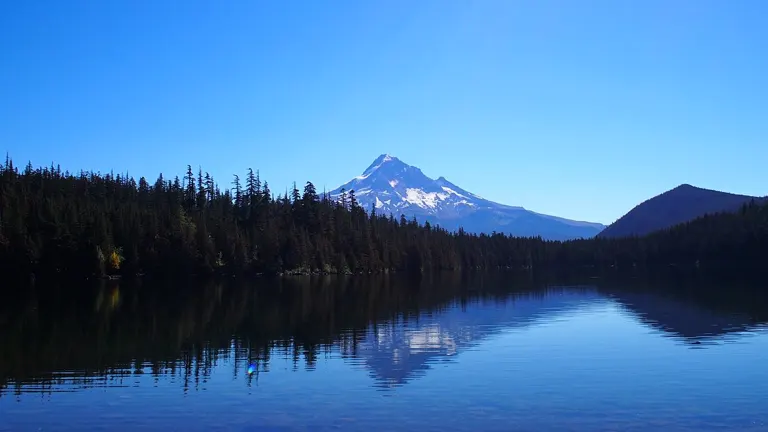
Encompassing over a million acres, this accessible forest, just a drive from Portland, features the majestic Mount Hood, dense forests, and diverse wildlife. It’s a paradise for nature lovers, providing a range of activities from tranquil hiking to exciting mountain biking. The forest’s scenic beauty, ecological diversity, and recreational opportunities make it an unforgettable destination for those seeking to connect with nature.
Characterizing Features of Mount Hood National Forest
- Mount Hood’s Dominance: The most striking feature of Mount Hood National Forest is Mount Hood itself, Oregon’s highest peak at 11,250 feet. This dormant stratovolcano, characterized by its nearly symmetrical cone and perennial snow cap, is not just a visual spectacle but also a center for geological study. The mountain’s glacial systems and volcanic history provide invaluable insights into the region’s geologic past and present.
- Diverse Ecosystems: The forest spans a vast elevation range, fostering diverse ecosystems. At lower elevations, dense, temperate rainforests dominate, characterized by towering Douglas firs and western hemlocks. Moving upward, these give way to subalpine and alpine environments, home to hardier flora and fauna adapted to harsher conditions. This ecological diversity makes the forest a critical site for studying environmental adaptation and biodiversity.
- River Systems and Watersheds: Integral to the forest’s ecology are its river systems, including the Sandy, Clackamas, and Salmon Rivers. These rivers are not only key to maintaining the forest’s diverse habitats but also serve as crucial watersheds for nearby urban areas. Their clean water supports aquatic life, offers recreational fishing, and sustains local agriculture and communities.
- Recreational and Wilderness Areas: Mount Hood National Forest is renowned for its extensive recreational and wilderness areas. It encompasses designated wilderness areas like the Mount Hood Wilderness, which provide undisturbed habitats for wildlife and allow for backcountry experiences. The forest’s extensive trail network, ski resorts, and scenic byways cater to a range of outdoor activities, highlighting its role in promoting physical health and connection with nature.
- Wildlife Habitat: The forest is a vital habitat for a wide range of wildlife. It supports species from large mammals like black bears and elk to rare birds like the northern spotted owl. The variety in elevation and habitats within the forest creates niches for different species, making it a key area for wildlife conservation and a living laboratory for studying North American fauna.
- Historical and Cultural Significance: Beyond its natural features, Mount Hood National Forest holds significant historical and cultural value. It encompasses areas that were historically important to Native American tribes and later played a role in the westward expansion of the United States. This blend of natural beauty and historical depth adds to the forest’s allure and importance.
History of Mount Hood National Forest
The history of Mount Hood National Forest is as rich and varied as its landscapes. Long before its establishment as a national forest, the land around Mount Hood was inhabited by Native American tribes, including the Multnomah, Wasco, and Molalla. These tribes revered the mountain for its spiritual significance and relied on the abundant natural resources of the area for their livelihood. The first recorded ascent of Mount Hood was in 1857, an event that marked the beginning of the area’s allure to explorers and settlers. In the late 19th and early 20th centuries, as the United States expanded westward, this region saw an influx of settlers drawn by the promise of resources and the beauty of the land.

The formal establishment of Mount Hood National Forest came in 1908, as part of a broader movement in the United States to conserve and manage forest lands for public use. Originally named the Oregon National Forest, it was renamed to Mount Hood National Forest in 1924, reflecting the iconic status of the mountain within the region. Over the years, the forest expanded through various land acquisitions and adjustments. The 20th century saw the development of infrastructure, such as roads and recreational facilities, which made the forest more accessible to the public. This development was balanced with efforts to preserve the natural environment, highlighting the forest’s dual role as a hub for recreation and a conservation sanctuary.
Unique Ecosystem of Mount Hood National Forest
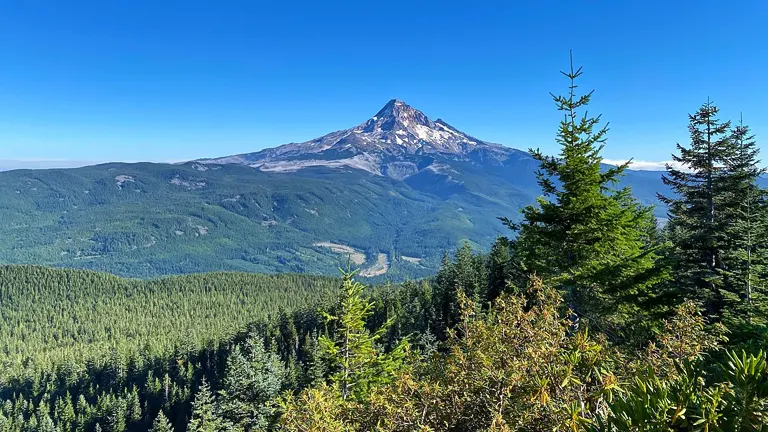
Mount Hood National Forest boasts a unique and diverse ecosystem shaped by its varying elevations and climatic conditions. Ranging from lush, lowland old-growth forests to alpine tundra, the forest provides habitats for a myriad of plant and animal species. The lower elevations are dominated by dense forests of Douglas fir, western hemlock, and Pacific silver fir, supporting wildlife such as black-tailed deer and Roosevelt elk. As elevation increases, these forests give way to subalpine and alpine zones, home to hardier species like mountain hemlock and alpine meadows bursting with wildflowers in spring and summer. This elevation gradient, coupled with the presence of streams and rivers, creates a complex mosaic of habitats that contribute to the forest’s ecological richness and importance as a biodiversity hotspot in the Pacific Northwest.
Location of Mount Hood National Forest

Mount Hood National Forest is located in the Cascade Range of Oregon, USA. It’s situated about 62 miles east of Portland, making it easily accessible for both day-trippers and long-term visitors. The proximity to a major city adds to its appeal, offering a quick escape to nature without the need for extensive travel.
How to Get There:
1. By Car from Portland:
- Route: Take US-26 E directly to Mount Hood National Forest.
- Travel Time: Approximately 1 to 1.5 hours depending on your starting point in Portland.
- Scenic Stops: Consider stopping at Jonsrud Viewpoint in Sandy for a stunning view of Mount Hood.
2. Using Public Transportation:
- Bus Services: Check for bus services from Portland, such as the Mt. Hood Express, which offers transit to key locations in the forest.
- Seasonal Shuttles: Look out for seasonal shuttle services, especially during ski season, that provide direct access to popular spots.
3. From Portland International Airport (PDX):
- Car Rental: Rent a car from the airport and follow the US-26 E route.
- Public Transit: Use airport shuttles or public transit to reach central Portland, then connect to bus services heading to the forest.
4. For International Visitors:
- Arrival at PDX: Fly into Portland International Airport, which is the closest major airport.
- Visa and Travel Documents: Ensure you have the necessary visa and travel documents for entry into the United States.
- Local Transportation: From PDX, use car rental or public transport as mentioned above.
5. Hiking In:
- Pacific Crest Trail (PCT): For long-distance hikers, Mount Hood National Forest is accessible via the PCT.
- Trailheads: Other trailheads leading into the forest include those at Zigzag, Ramona Falls, and Top Spur.
6. Cycling:
- Bike Routes: Experienced cyclists can bike from Portland using mapped bike routes. Ensure you’re prepared for a long, challenging ride.
- Bike-Friendly Public Transport: Some public transit options may accommodate bicycles, allowing for a combined approach.
.
The Importance of Conservation and Recreation in Mount Hood National Forest
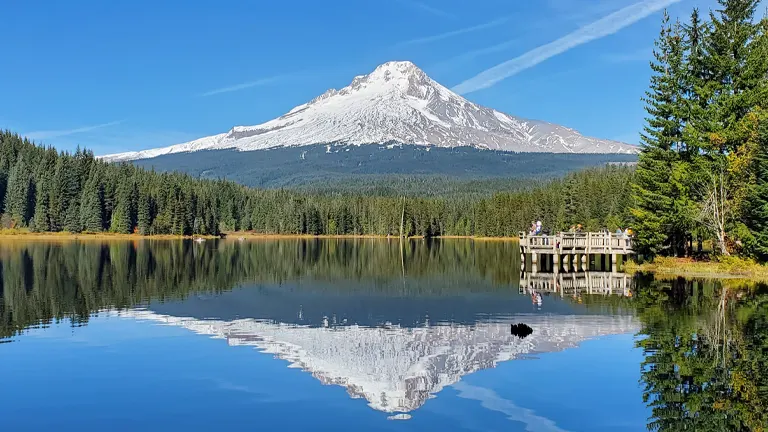
In Mount Hood National Forest, the synergy between conservation and recreation plays a crucial role in sustaining its ecological health and providing public enjoyment. Conservation efforts are vital in preserving the forest’s diverse ecosystems, protecting habitats for numerous species, and maintaining natural resources like watersheds and soil quality. Simultaneously, recreational activities, such as hiking, camping, and skiing, not only support local economies but also foster a deeper public appreciation for the natural environment. Balancing these two aspects is essential; while recreation brings people closer to nature, promoting conservation awareness, stringent conservation policies ensure these natural spaces remain pristine and accessible for future generations. This delicate balance positions Mount Hood National Forest as a model for sustainable outdoor recreation intertwined with environmental stewardship.
Diverse Vegetation and Plant Species in Mount Hood National Forest:
- Douglas Fir (Pseudotsuga menziesii): Dominating the lower and middle elevations of the forest, the Douglas fir is a towering evergreen, known for its significant role in the forest’s ecology and the timber industry. Its thick bark and tall stature make it a resilient and defining species of the Pacific Northwest.
- Western Hemlock (Tsuga heterophylla): Commonly found alongside Douglas fir, the western hemlock thrives in the moist, cool environments of the forest. It’s recognized by its drooping top and feathery foliage, playing a key role in providing habitat and maintaining biodiversity within the forest ecosystem.
- Pacific Silver Fir (Abies amabilis): This species is prevalent in higher elevation areas, particularly in moist, shady locations. Characterized by its smooth bark and flat needle leaves, Pacific silver fir contributes to the forest’s unique alpine landscape and provides critical habitat for wildlife.
- Mountain Hemlock (Tsuga mertensiana): In the subalpine zones, mountain hemlock stands out with its tolerance for cold and high altitudes. This species is easily identified by its conical shape and small, rounded cones, adding to the diverse coniferous makeup of the forest.
- Oregon Grape (Mahonia aquifolium): This low-growing evergreen shrub is Oregon’s state flower. It flourishes under the forest canopy and is notable for its holly-like leaves, yellow flowers, and blue berries, which are an important food source for local wildlife.
- Wildflowers: The forest’s alpine meadows burst into color with wildflowers in the spring and summer. Species like Lupine (Lupinus), Indian Paintbrush (Castilleja), and Beargrass (Xerophyllum tenax) create a vibrant tapestry that attracts visitors and supports a variety of pollinators.
- Mosses and Ferns: In the forest’s damp, lower elevations, a rich array of mosses and ferns, such as the Sword Fern (Polystichum munitum) and Oregon Beaked Moss (Kindbergia oregana), create a lush understory. These species are essential for maintaining soil moisture and contributing to the forest’s nutrient cycle.
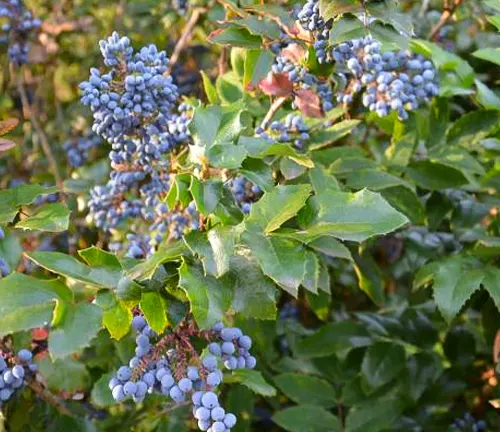
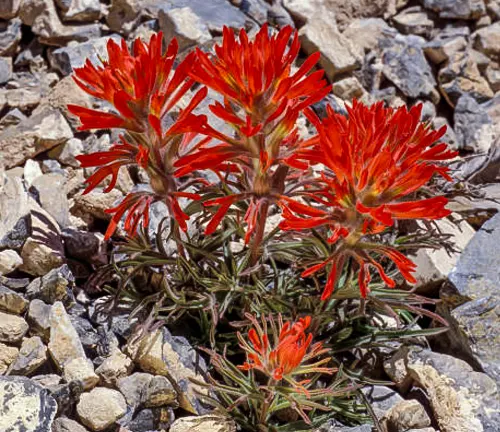
Fauna in Mount Hood National Forest
- American Black Bear (Ursus americanus): As one of the largest mammals in the forest, black bears are an iconic species. They are omnivorous and play a crucial role in the ecosystem, helping to control insect populations and disperse seeds through their diet.
- Roosevelt Elk (Cervus canadensis roosevelti): Named after President Theodore Roosevelt, these large elk are a subspecies adapted to the rainforests of the Pacific Northwest. They are commonly seen in the forest’s meadows and clearings, particularly in the early morning or late evening.
- Northern Spotted Owl (Strix occidentalis caurina): This elusive owl is a species of concern due to its declining numbers. Preferring old-growth forests, it relies on the dense canopy for nesting and hunting. Its presence indicates a healthy, undisturbed forest environment.
- Peregrine Falcon (Falco peregrinus): Known for being one of the fastest birds, peregrine falcons are impressive predators in the forest. They often nest on high cliff faces and are a thrilling sight for bird watchers.
- Coho Salmon (Oncorhynchus kisutch): These salmon are vital for the forest’s nutrient cycle, migrating from the ocean to freshwater streams in the forest to spawn. Their lifecycle supports not only the aquatic ecosystems but also terrestrial wildlife, such as bears and eagles.
- Mountain Beaver (Aplodontia rufa): Despite its name, the mountain beaver is not a beaver but a unique rodent native to the Pacific Northwest. It plays an important role in forest ecology, aiding in soil aeration and undergrowth management.
- Cascade Frog (Rana cascadae): This amphibian is often found in the alpine lakes and ponds of the forest. Its presence is a good indicator of environmental health, especially water quality.
- Red-tailed Hawk (Buteo jamaicensis): Commonly seen soaring above the forest, red-tailed hawks are key predators. They play a vital role in controlling rodent populations and maintaining ecological balance.
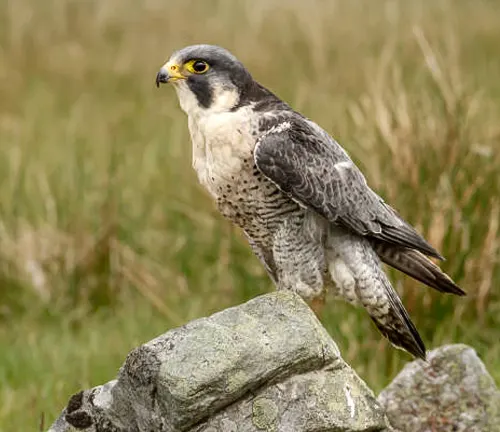
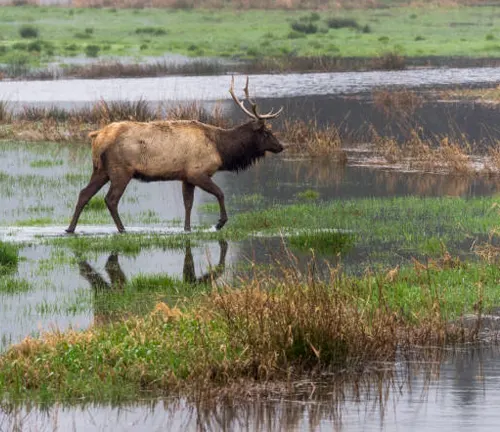
Different Attractions in Mount Hood National Forest

Timberline Lodge: An architectural marvel and a historic landmark, Timberline Lodge sits at an elevation of 6,000 feet on the southern slope of Mount Hood. Built during the Great Depression through a New Deal program, it’s renowned not only for its unique craftsmanship but also as a year-round destination for skiing and snowboarding. The lodge offers breathtaking views of the mountain and surrounding landscape, making it a popular spot for both outdoor enthusiasts and history buffs.
Trillium Lake: Known for its stunning reflections of Mount Hood, Trillium Lake is a picturesque destination ideal for photography, picnicking, and relaxation. In the summer, it’s a haven for activities like fishing, canoeing, and swimming, while in the winter, the area transforms into a peaceful spot for snowshoeing and cross-country skiing. The easy accessibility and the serene setting of the lake make it a favorite among families and nature lovers.
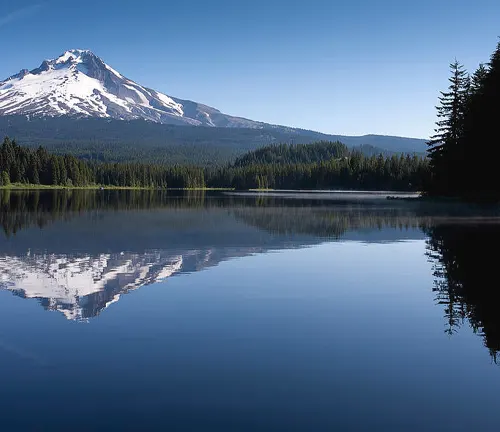
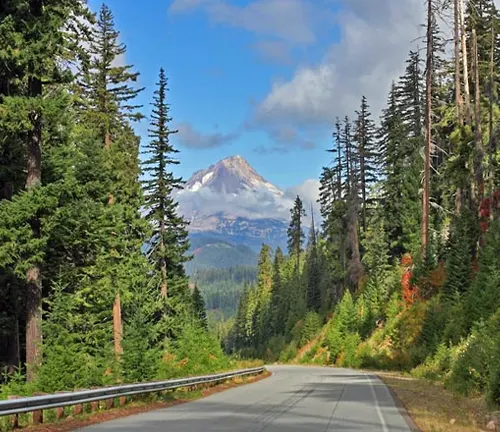
Mount Hood Scenic Byway: This scenic route offers a spectacular drive around Mount Hood, showcasing the diversity of the forest’s landscapes. Along the byway, travelers encounter lush valleys, cascading waterfalls, and panoramic viewpoints. The drive also provides access to various trailheads and recreational sites, making it a perfect way to explore the different facets of the forest.
Ramona Falls: This cascading waterfall is a hidden gem within the forest, offering a serene and picturesque hike. The trail to Ramona Falls is about 7 miles round trip and winds through old-growth forests and along the Sandy River. The falls themselves, with their unique, veil-like appearance, are a stunning sight and a rewarding destination for hikers.
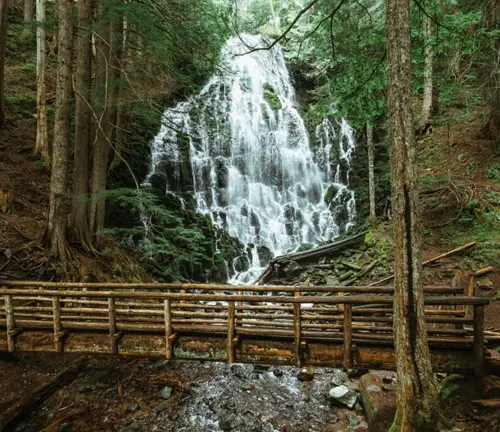
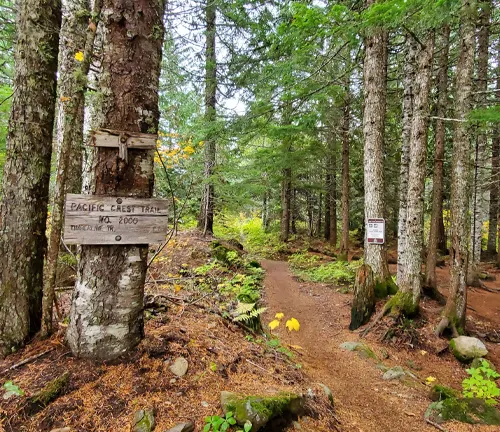
Pacific Crest Trail (PCT): One of the most famous long-distance hiking trails in the world, the PCT, passes through Mount Hood National Forest. This section of the trail offers hikers dramatic views of Mount Hood, alpine meadows, and a chance to experience the diverse ecosystems of the forest. It’s a bucket-list adventure for seasoned hikers and provides numerous shorter segments for day hikers.
Hood River Fruit Loop: Located at the base of Mount Hood, this 35-mile scenic drive takes visitors through orchards, vineyards, and farms. It’s a great way to experience the agricultural richness of the area, with opportunities to stop for fruit picking, wine tasting, and enjoying local produce. The Fruit Loop is particularly popular in the fall, when the harvest season brings a bounty of fresh fruits and festivities.
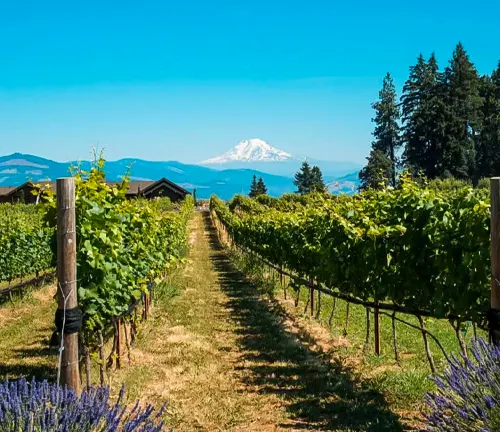
Recreational Activities in Mount Hood National Forest
- Hiking and Backpacking: With over 1,000 miles of trails, Mount Hood National Forest is a hiker’s paradise, catering to all skill levels. Popular trails include the Ramona Falls Trail, offering a moderate hike with a stunning waterfall as the reward, and the challenging Mirror Lake Trail, known for its breathtaking views of Mount Hood. For the more adventurous, backpacking along segments of the Pacific Crest Trail provides an immersive experience in the diverse landscapes of the forest.
- Skiing and Snowboarding: The forest is a premier destination for winter sports, particularly at Timberline Lodge and Ski Area, which boasts the longest ski season in North America. Skiers and snowboarders of all abilities can enjoy the varied terrain, from gentle slopes for beginners to challenging runs for experts. The historic lodge adds a unique charm to the skiing experience.
- Mountain Biking: Mountain biking enthusiasts will find a range of trails in Mount Hood National Forest, from gentle rides through scenic meadows to challenging downhill tracks. The Sandy Ridge Trail System, for example, offers over 15 miles of world-class trails, catering to riders seeking both thrill and beauty.
- Fishing: The numerous rivers and lakes in the forest, such as the Sandy and Clackamas Rivers, are prime spots for fishing. Anglers can expect to catch species like trout, salmon, and steelhead, making the forest a popular destination for both fly fishing and traditional angling. Remember to check for fishing regulations and necessary permits.
- Camping: With its vast wilderness and scenic beauty, camping in Mount Hood National Forest is a way to truly connect with nature. The forest offers a variety of camping experiences, from developed campgrounds with amenities to remote backcountry sites. Trillium Lake Campground, for example, is a favorite for its stunning views and family-friendly environment.
- Wildlife Viewing and Photography: The diverse ecosystems of the forest make it an excellent location for wildlife viewing and photography. The forest’s inhabitants, such as elk, black bears, and a variety of bird species, can often be spotted in their natural habitats, offering enthusiasts and photographers unique opportunities to observe and capture wildlife.
- Snowshoeing and Cross-Country Skiing: During the winter months, many of the forest’s trails are transformed into beautiful routes for snowshoeing and cross-country skiing. These activities offer a peaceful way to explore the winter wonderland of the forest, with trails suitable for all experience levels.
- Picnicking: For those looking for a more leisurely experience, picnicking in the forest’s numerous scenic areas is a delightful option. Designated picnic areas, such as those around Lost Lake or within the Hood River Fruit Loop, provide stunning natural backdrops for a relaxing day out.
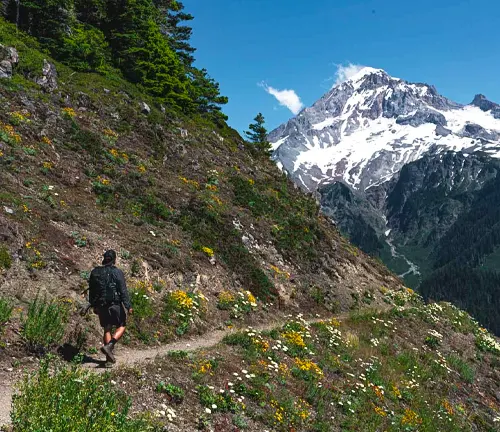
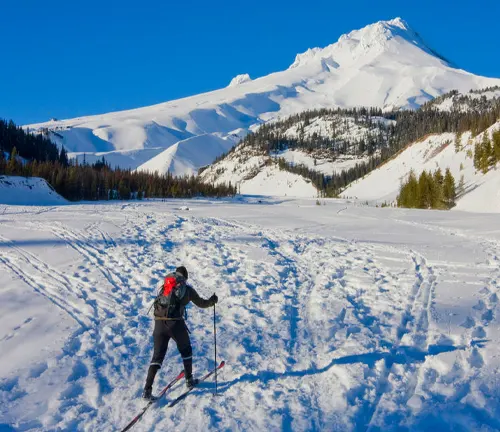
Different Facilities and Amenities in Mount Hood National Forest
- Campgrounds: Mount Hood National Forest offers a variety of campgrounds catering to different preferences, from primitive sites to those with more amenities. For example, Lost Lake Campground provides a more rustic experience, while Trillium Lake Campground offers facilities like restrooms and potable water. These campgrounds are ideal for visitors looking to immerse themselves in nature, whether it’s for a night or an extended stay.
- Picnic Areas: Scattered throughout the forest are numerous picnic areas, offering tables and sometimes grills, set in scenic locations. These areas are perfect for day visitors who want to enjoy a meal surrounded by nature. Some popular picnic spots include those around Mirror Lake and along the Sandy River, providing beautiful views and easy access.
- Visitor Centers: The forest’s visitor centers, such as the Zigzag Ranger Station and the Mount Hood Cultural Center and Museum, offer educational displays, maps, and information about the forest. These centers are a great starting point for visitors to learn about the area’s history, flora, fauna, and available activities.
- Hiking Trailheads: The forest boasts an extensive network of hiking trails, with well-maintained trailheads that often include parking, information boards, and restroom facilities. Trailheads like those for the Timberline Trail and Ramona Falls are gateways to exploring the diverse landscapes of the forest.
- Ski Resorts: For winter sports enthusiasts, the forest is home to several ski resorts, including the famous Timberline Lodge and Ski Area. These resorts offer facilities such as ski lifts, rental shops, and lodges with food and accommodations, catering to both beginners and experienced skiers and snowboarders.
- Boat Launches: In areas like Trillium Lake and Lost Lake, boat launches allow visitors to enjoy water-based activities like kayaking, canoeing, and fishing. These facilities are typically equipped with parking and are situated for easy access to the water.
- Interpretive Sites and Trails: The forest has several interpretive sites and trails, such as the Barlow Road Historic Corridor and the Wildwood Recreation Site. These areas provide educational experiences about the natural and cultural history of the forest, often featuring informational signage and guided walk options.
- Restrooms and Sanitation Facilities: Across the forest, especially in more developed areas like campgrounds and near major trailheads, visitors will find restroom facilities. These range from simple pit toilets to full restrooms in some of the more popular or developed areas, ensuring basic sanitation needs are met for guests.
Tips and Advice for Visiting Mount Hood National Forest
- Check Weather Conditions: Weather in the forest can change rapidly, especially in higher elevations. Before heading out, check the latest weather forecasts. During winter, be prepared for snow and icy conditions, while summer visitors should be ready for variable temperatures and occasional rain showers. This preparation is crucial for a safe and enjoyable experience.
- Leave No Trace Principles: Follow the Leave No Trace principles to help preserve the natural beauty and ecological integrity of the forest. This includes packing out all trash, staying on designated trails to protect fragile ecosystems, and not disturbing wildlife or plant life. By practicing these principles, visitors ensure that the forest remains pristine for future generations.
- Wildlife Safety: Mount Hood National Forest is home to diverse wildlife, including bears and elk. While wildlife encounters can be exciting, it’s important to observe animals from a safe distance and never feed them. Store food securely, especially in campgrounds, to avoid attracting animals to human-occupied areas.
- Trail Etiquette: When hiking, practice good trail etiquette. This includes yielding the right of way to uphill hikers and being courteous to other trail users. Keep pets on a leash and under control, and be mindful of noise levels to maintain the tranquil natural environment.
- Be Prepared for Outdoor Activities: Whether you’re hiking, skiing, or camping, proper preparation is key. This means having the right gear, such as sturdy footwear for hiking and warm clothing for winter activities. Also, bring plenty of water and snacks, a map or GPS, and a first-aid kit.
- Respect Fire Regulations: Be aware of current fire regulations, which can change depending on weather conditions and the season. Campfires may be prohibited during dry periods. If allowed, ensure fires are fully extinguished before leaving and use established fire rings in campgrounds.
- Plan Ahead for Accommodations and Permits: During peak seasons, campgrounds and lodges can fill up quickly. It’s advisable to book accommodations in advance. Additionally, some areas of the forest may require permits for activities like wilderness camping or parking, so check ahead and secure any necessary permits.
- Stay Informed about Forest Conditions: The forest’s conditions can vary due to factors like ongoing conservation projects, wildlife activity, or trail maintenance. Stay informed by checking the forest’s official website or contacting ranger stations for the latest updates before your trip.
Recommendation
For those seeking a blend of adventure and tranquility, Mount Hood National Forest is an ideal destination. Whether it’s exploring its natural wonders or simply unwinding in its peaceful surroundings, the forest caters to all types of visitors.
Conclusion
In conclusion, Mount Hood National Forest stands as a magnificent testament to the natural beauty and outdoor recreation that the Pacific Northwest has to offer. Its diverse landscapes, ranging from dense forests to alpine meadows, along with a plethora of activities for nature enthusiasts, make it a must-visit destination. Whether you’re seeking adventure, tranquility, or a chance to connect with nature, Mount Hood National Forest delivers an unforgettable experience, embodying the essence of wilderness and conservation in harmony.
FAQs
- Can I find any hidden waterfalls in Mount Hood National Forest?
Yes, the forest is home to several lesser-known waterfalls. Tamanawas Falls, for example, offers a beautiful hike and a stunning secluded waterfall experience. - Are there specific areas in the forest known for exceptional stargazing?
For stargazing, the clear skies over Trillium Lake provide a fantastic view of the night sky, away from city lights. Summer months offer clearer skies for astronomy enthusiasts. - Does the forest have any areas of geological interest?
Yes, the forest includes interesting geological sites like the volcanic rock formations around Ramona Falls and the glacial valleys near the mountain’s summit, which are perfect for geology buffs. - What are some rare plant species I might find in the forest?
The forest is home to several rare plants, such as the Phantom Orchid (Cephalanthera austiniae), which is a non-photosynthetic plant that can be spotted in the forest’s shaded areas. - Are there any historical landmarks within the forest?
Yes, the Timberline Lodge is a National Historic Landmark, famous for its unique architecture and rich history. Additionally, sections of the Oregon Trail and Barlow Road run through the forest. - Can beginners find suitable hiking trails in the forest?
Absolutely, trails like the Old Salmon River Trail are perfect for beginners, offering an easy and scenic hike alongside the river with minimal elevation gain. - Is there a best spot for wildflower viewing in the forest?
The meadows around Paradise Park, accessible via a hike from Timberline Lodge, are renowned for their spectacular wildflower displays in late summer. - Are there any eco-friendly or sustainable practices visitors should be aware of?
Visitors are encouraged to practice eco-friendly habits like carpooling to reduce traffic, using reusable water bottles, and sticking to established trails to minimize their ecological footprint.
In the embrace of Mount Hood National Forest, one finds more than just a retreat from the everyday. It’s a place where the grandeur of nature inspires, and the serenity of the surroundings rejuvenates. A visit here is not just a journey through a landscape but an exploration of the soul amid nature’s wonders.


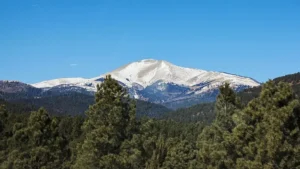

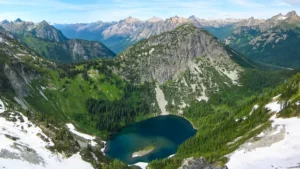
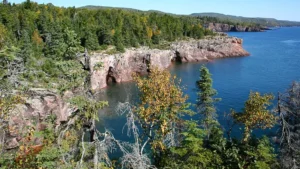

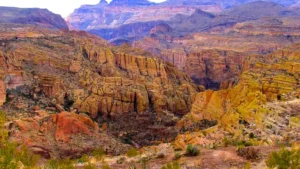
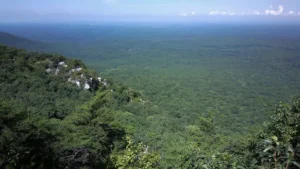
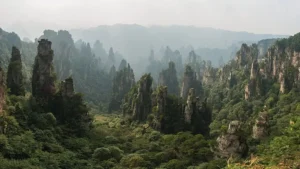
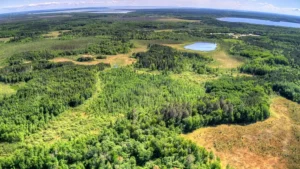
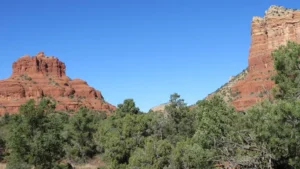

Leave your comment